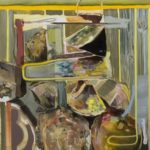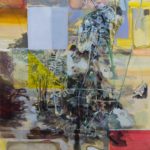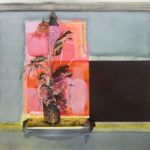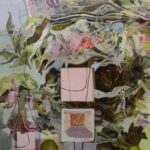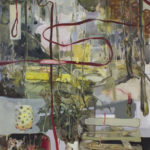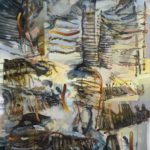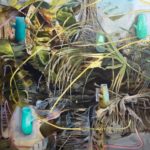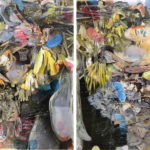Jim Graham
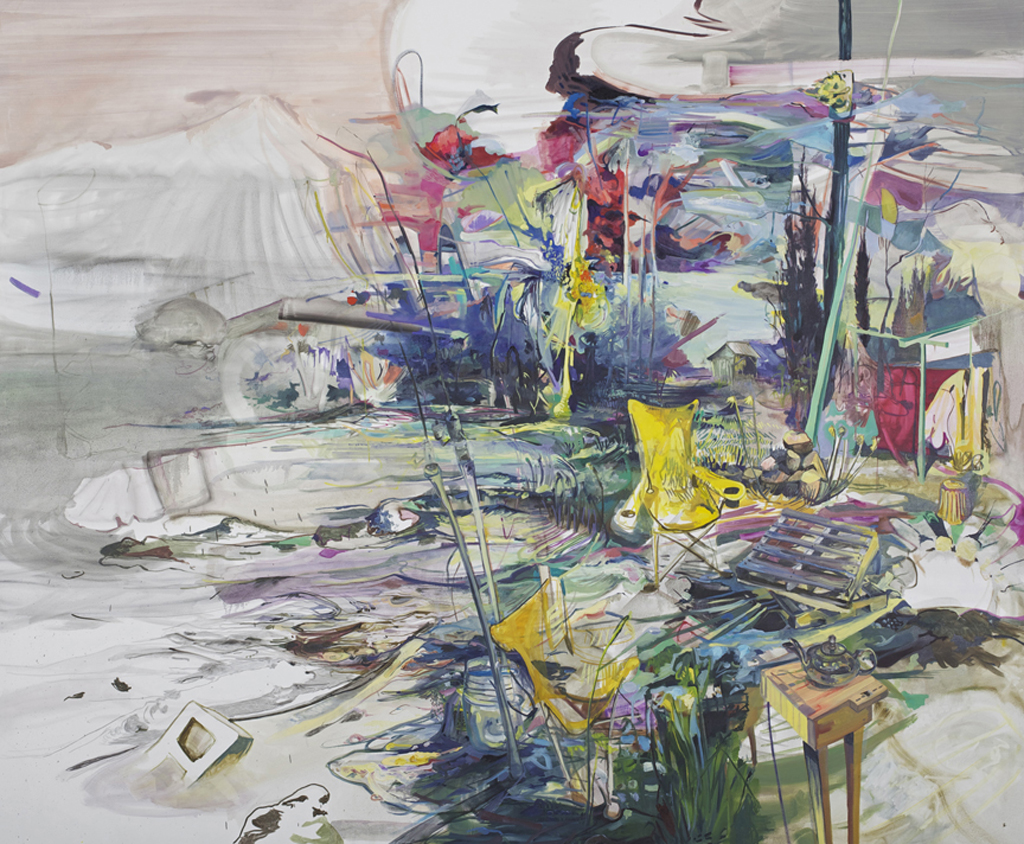
www.jimgrahamart.com
Biography
Many of Graham’s paintings are naturalist in subject, expanding upon the traditions of both landscape and narrative genre painting. His work often features synthetic reproductions of organic material – a nod to the commercial interests of tourist economies. A long-time resident and environmental advocate of two coastal communities, Graham’s work has been heavily influenced by the low-lying areas along the Eastern seaboard and the Gulf Coast region of the United States. For these communities, the cultivation and erosion of public perception remains as important to livelihoods as the physical adaption to the changing land. His work borrows a “high water mark” aesthetic, depicting entangled combinations of organic sediment and smaller refined objects that remain when the water recedes Extending this vision towards his own studio practice, Graham’s paintings depict a civilized present beginning to move towards a more primitive past.
Graham is a research fellow at the Hambidge Center for the Creative Arts, Rabun Gap, Georgia (2018) and was a Joan Mitchell Foundation Emerging Artist Grant Nominee (2016). Select solo exhibitions include the Cole Pratt Gallery, New Orleans (2016), the Sella-Granata Art Gallery, University of Alabama, Tuscaloosa (2017), and the Greenleaf Art Gallery, Whittier College, Los Angeles (2018). Articles relating to these exhibitions have been published in the Winter 2017 New Orleans Review, reviewed by Judith Bonner and featured in Art + Design Magazine, Environmental Issue | Summer of 2017.
Graham is currently a Visiting Assistant Professor at the University of Arizona and is represented by the Saladino Gallery in Covington, LA.
Q & A
What have you been doing since graduating from FSU?
I am currently on a four-year moving cycle. After leaving Tallahassee, I spent four years in Chicago, then four in New Orleans. My wife (Laura Tanner Graham) and I are both artists with independent studio practices. We are both dedicated to our individual disciplines and try to make decisions that will show growth for both of our professions. We found New Orleans to be a particularly vibrant community that supports its emerging/mid-career artists. Shortly after accepting a position at Southeastern Louisiana University as the Painting Area Coordinator and Full time Instructor, I was offered representation by Cole Pratt Gallery. Laura also found representation through the Jonathan Ferrara Gallery that led to several subsequent shows of importance. Things change quickly, but I feel comfortable labeling myself a New Orleans based artist. Laura was just offered an Assistant Professor position at the University of Arizona. While we will both be moving to Tucson, I plan on keeping one foot planted in New Orleans.
What did you learn at FSU to get you there?
In the years immediately following my BFA at Florida State, I found myself closely following the advice/recommendations of faculty that I trusted. Anne Stagg recommended University of Illinois for Graduate school, and both Laura and I were fortunate to have been accepted into the program. While I was studying at UIUC, Judy Rushin was invited as visiting artist, further bridging the gap between my BFA and MFA programs. Carrie, Lillian, and Mark have helped tremendously along the way and continue to do so. It is only within the past few years that I truly feel as though I am able to start returning the favor (largely as an instructor) by helping undergraduate students at SELU to find their way beyond graduation. It took a while for me to feel enough momentum in my personal career to be comfortable giving advice as to what might be in the best interest of other artists. Professionally, I also feel as though the artist community that Laura and I were fortunate to find in Tallahassee, Chicago, and New Orleans has become large enough to where it is building on its own momentum. Exhibitions, residencies, and other artist opportunities get shared amongst the community and we are genuinely excited to see the careers of our colleagues doing so well.
What advice would you give to art students?
I stress to my students the importance of being actively engaged with artists beyond the required academic classes. Especially as an undergraduate, there are opportunities to contribute to practices outside of your own – both with faculty and other students. Find those opportunities and put your personal practice on the backburner for a weekend. It is too easy to become consumed in your own work and not take the time to invest in the folks around you.
